Last Updated on December 20, 2025 by Emma Fajcz | Published: September 8, 2020
Cacio e pepe is the classic flavor of Rome, and one of its best and most beloved dishes.
Cacio is Roman dialect for “cheese”—in this case, assertive sheep’s-milk pecorino romano—and pepe is black pepper. Put it all together, and you get this classic of cucina romana, in which pasta is tossed with handfuls of cheese, a mouth-tingling amount of pepper, and a bit of the pasta water to create a creamy sauce.

The creation of hungry shepherds working in the Roman countryside, cacio e pepe is everywhere in the Eternal City—and not only the standard pasta-based version. There’s cacio e pepe pizza, chips, ravioli…you name it.
There are dozens of restaurants with good renditions, especially of simple pasta cacio e pepe. But here are some of the places where you’ll find the best cacio e pepe in Rome, from the most traditional to modern twists.
Where to eat the best cacio e pepe in Rome
1. Lo’steria
A simple, modern restaurant in the chic Ponte Milvio neighborhood, Lo’steria specializes in classic Roman fare, flawlessly executed at low prices.
Their version of cacio e pepe is simply perfect. Chewy tonnarelli (a long, square-ended pasta that’s the most common shape for cacio e pepe) are tossed with an enormous amount of strong pecorino and roughly crushed pepper, and loosened with pasta water until the pasta is completely coated.
Rich, yes, but also so spicy and sharp that you’ll eat every tonnarello and then use a heel of bread to scrape the slightly-coarse, cheesy pudding off the bottom of the plate
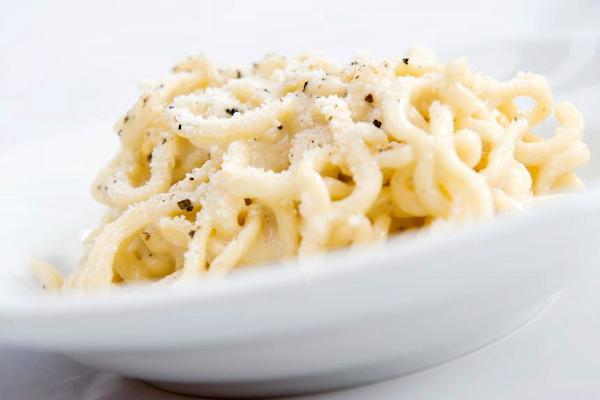
2. Da Cesare al Casaletto
One of Rome’s most lauded (and busiest) restaurants, Da Cesare al Casaletto makes a very good plate of standard cacio e pepe. We’re putting it on our list, however, for their unique, addictive gnochetti fritti alla cacio e pepe.
Miniature potato gnocchi are fried and then placed on a platter smeared with a cream of pecorino and pepper (what normally you’d stir into hot pasta). The combination of hot, crisp dough and cool, smooth sauce is at once uniquely Roman and just plainly delicious.
Fair warning: The appetizer portion is large and filling. Split it with friends or else your roast lamb will arrive and immediately need to be put into a doggy bag.
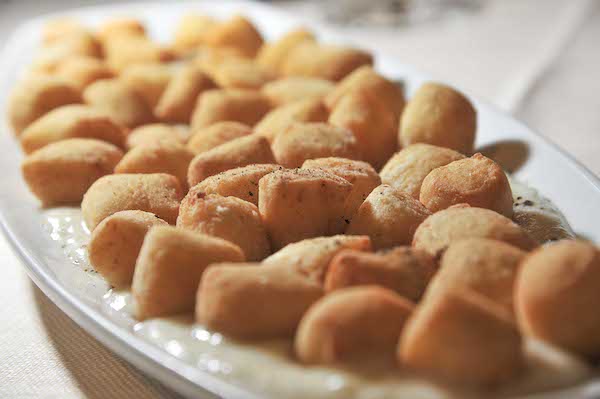
3. MeAT
MeAT (Via Portuense, 465) is a modern Roman-Jewish trattoria, located far outside the old ghetto, interpreting the cuisine of Europe’s oldest Jewish community (over 2000 years of continuous inhabitation).
Cacio e pepe is a common Roman-Jewish dish, because it doesn’t involve pork like many other pastas. At MeAT, you can get great, simple tonnarelli cacio e pepe. But it’s even better when another Roman ingredient is added in: cicoria ripassata, or sauteéd chicory. The long green strands slither into the noodles, giving every cheesy bite a tonic-like shot of bitter greenness.
4. Sbanco
One of three sit-down pizzerias owned by Stefano Callegari, best known as the inventor of the Trapizzino, Sbanco serves whole pies, chewy and risen, with all the usual and unusual toppings. But it’s best known for its cacio e pepe pizza.
A circle of dough is baked with crushed ice on top, which keeps the surface soft and pliable, and then drenched with a heady mixture of—you guessed it—pecorino and black pepper when it comes out of the oven. The underlying layer, where the ice was, becomes creamy, but the top remains dry and crumbly. The final product perfectly imitates the taste and texture of the classic pasta, where the pecorino is first emulsified into a sauce and then sprinkled on top.
Local’s Tip: Sbanco is the most centrally-located of the three pizzerias. But you can also get the cacio e pepe pizza at Sforno and Tonda.
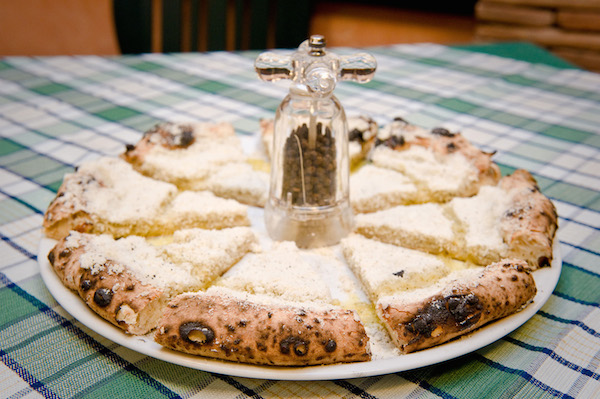
5. Da Danilo
Da Danilo, in the Esquilino quarter, has one of the most famous—and delicious—versions of cacio e pepe in town.
At Danilo, the server doesn’t just bring you a plate of pasta. They wheel a tire-sized wheel of hollowed-out pecorino to your table. In go the hot, al-dente tonnarelli, still dripping with starchy water from the pot, covered with giant pinches of pecorino and pepper.
The server takes their tongs and vigorously stirs the ingredients together. All the while, they’re making sure to scrape the interior sides of the cheese wheel and toss the pasta up and down so that the end result is airy rather than dense.
Onto the plate it goes, with a fresh grate of cheese and twist of pepper on top. Only then can you eat. One bite, packed with that classic “sheepy” flavor and zesty with pepper, and you understand why Romans love cacio e pepe so much.
There’s one more spot serving the best cacio e pepe in Rome that we want to keep a secret. But join us on our Testaccio Neighborhood Food & Market Tour and you’ll discover it for yourself. (And yes, we try the famous cacio e pepe.)
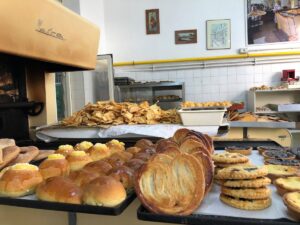
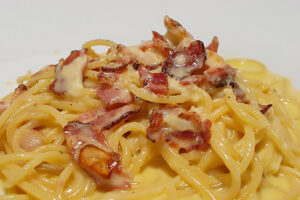
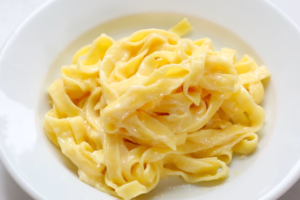






You missed the unique cacio e pepe by Monte Caruso Cicilardone. It really deserve a visit…
Another excellent option! There’s so many great spots for cacio e pepe in Rome!